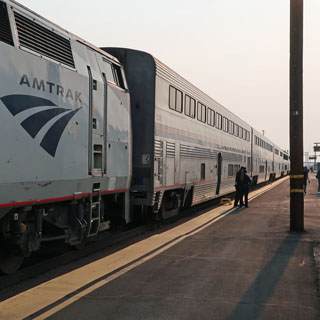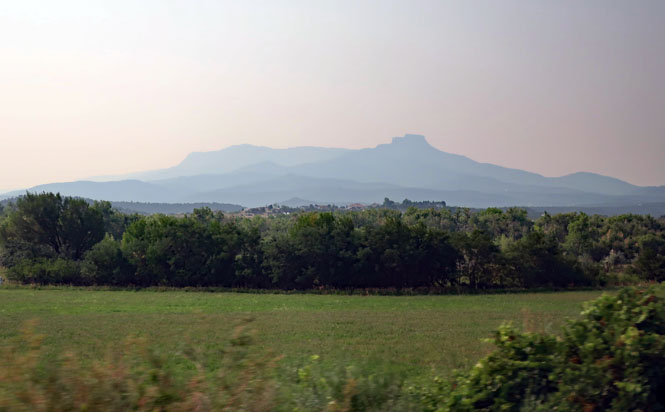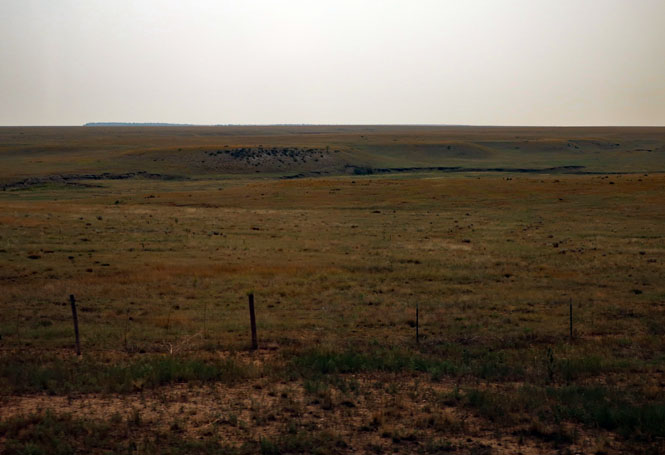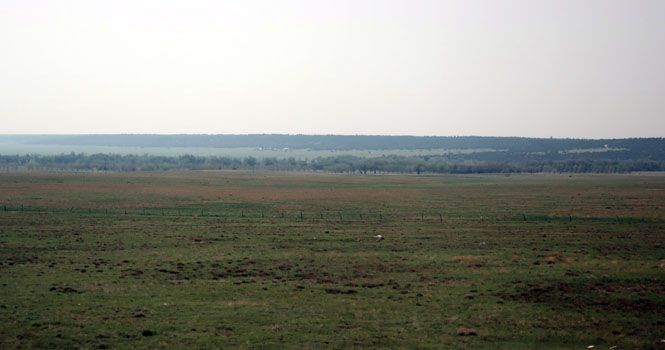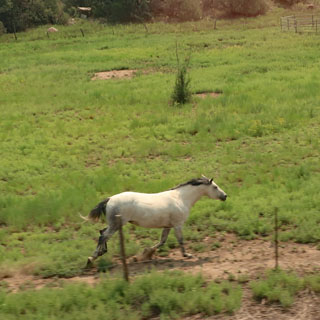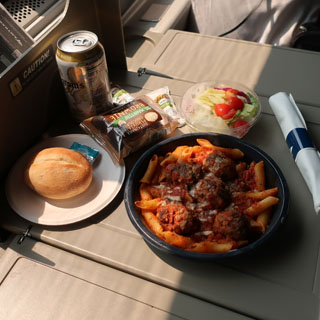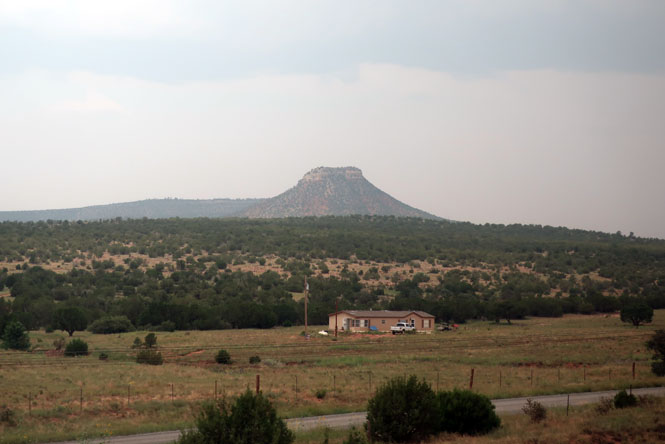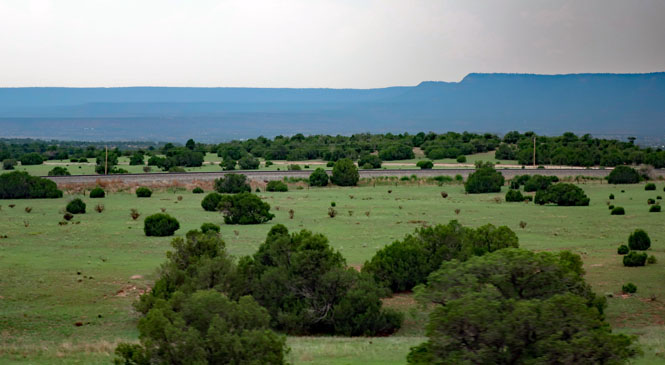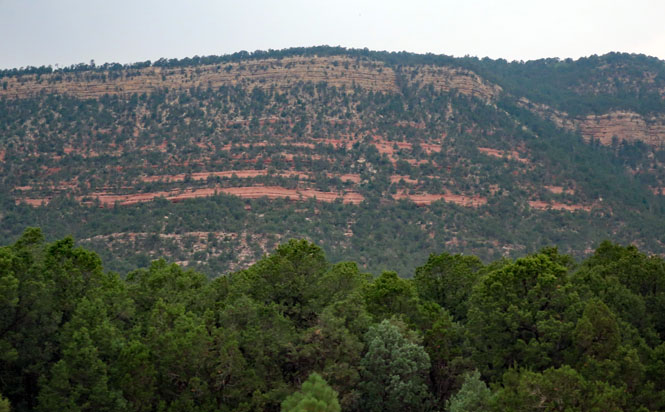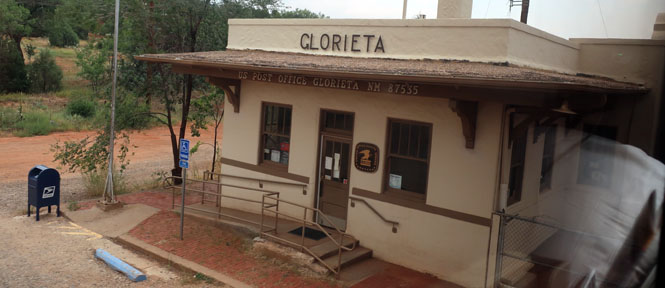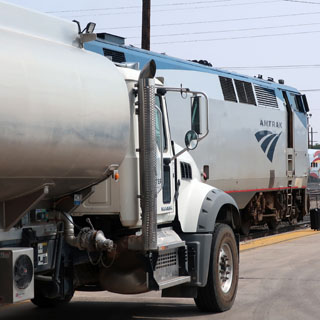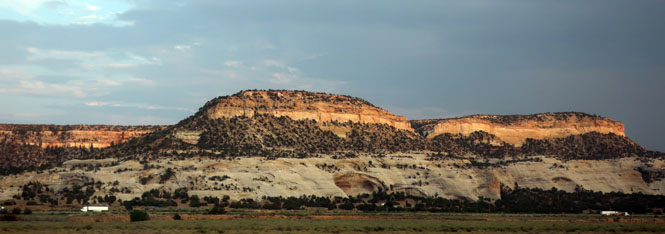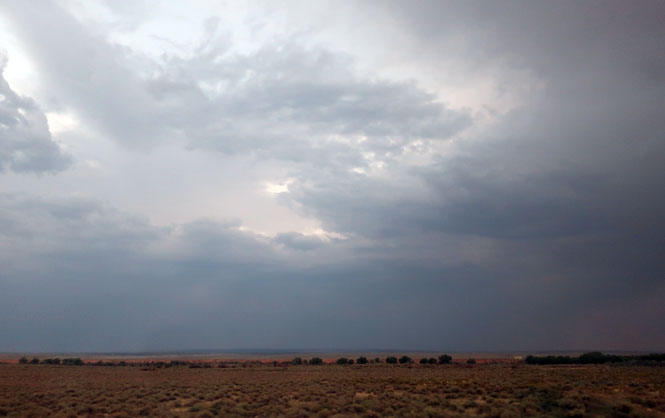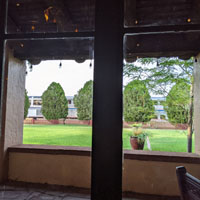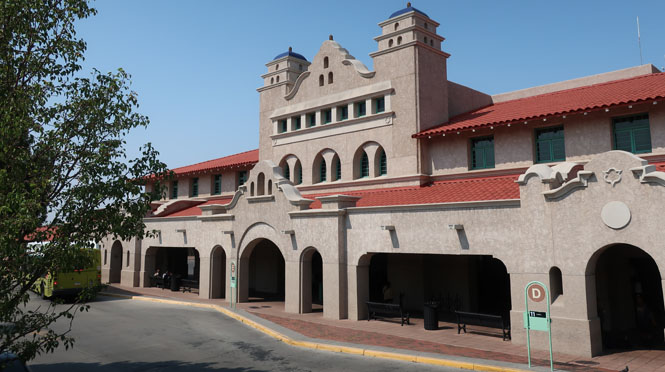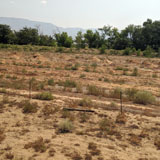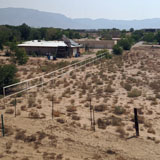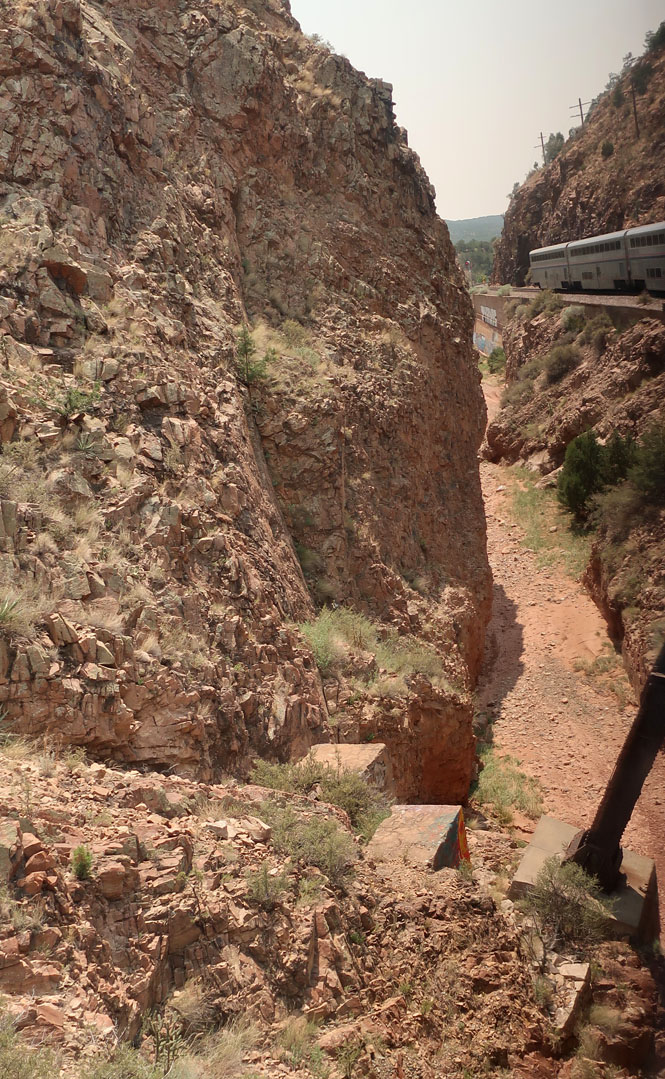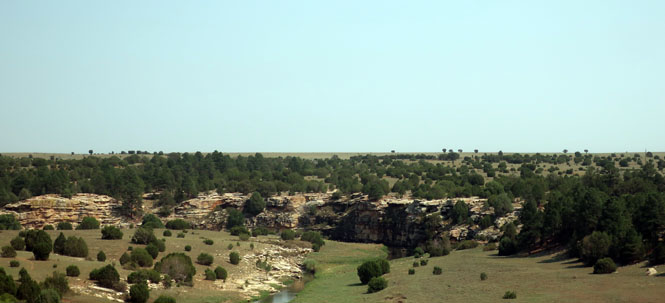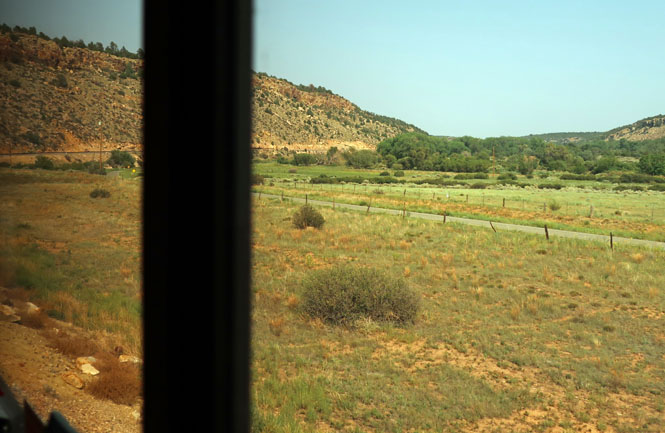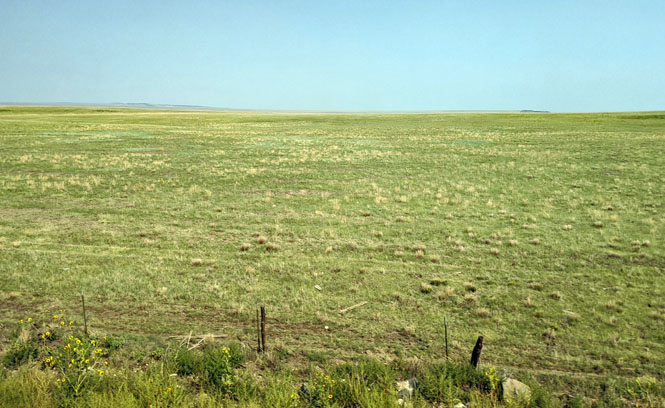August 23 - 25, 2020

Earlier, I had dinner at the Castañeda Hotel in Las Vegas, New Mexico. That historic hotel included the first track-side Harvey House restaurant built by the Santa Fe Railroad and would set the standard for the others that would be built.
For this trip, I'll be having lunch at La Posada, in Winslow, Arizona. This was also once a Harvey House, and an argument could be made that this hotel--designed by Mary Colter--is the finest of them all (certainly, of the remaining ones that have not been demolished). It was built in 1930.
It was a near-thing, but this hotel has been saved from destruction and has now been restored to the impressive destination that it deserves to be.
Winslow, Arizona is not a big place. The town grid (except for what's newer) extends from the railroad tracks. Route-66 ran parallel to the tracks. I-40, however, loops north to avoid the town, so if you're driving and you're not paying attention for five minutes, you might miss that fact that you've gone right past Winslow.
La Posada sits at the southeast corner of town (as labeled, below) with the Santa Fe Railroad on one side and old Route-66 on the other. Then, as now, the train stops at the hotel.
 Kansas
Kansas
The #3 Southwest Chief leaves the station at Newton, Kansas at 2:45am. At least there's not much traffic that time of night and parking is easy at the post office, just across Main Street.
Incidentally, the train was on time for both out and return legs of the trip.
Newton, Kansas.

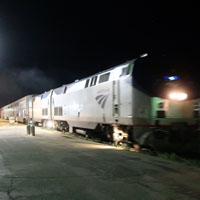
I've got a roomette for both directions, and the car attendent has my bed ready for me. I'll next be awake when we reach Colorado.
What about the virus? Masks must be worn everywhere on the train with the obvious exceptions for the private rooms (such as the roomette I had) and the shower/toilets. The dining car is open, but is limited to sleeping-car passengers and the food is not cooked on the train, but is from a menu of pre-made meals of the sort that you might buy at a well-stocked convenience store or market. Meals will also be delivered to your room, which is what I did. Essentially, it's shelter-in-place on rails.
What about the photographs? I used both a pocket-camera (Canon G9X-Mark 2) and a phone (Pixel 3). The windows on the superliner have a coating that likely reduces the solar heating of the interior, but also adds a filter for all shots that gives the images an orange tint. Both the phone and the camera had trouble with this, but in different ways. I've processed the images best I could, but if you think some of the colors don't look quite right; that's why.
 Colorado
Colorado
Crossing US-50 at Lamar, Colorado while I'm having breakfast. This would be the only meal I had in the dining car, but even so, I was just given a box. I believe I was the only passenger in the dining car at this time. The Chief is intentionally operating well below capacity.
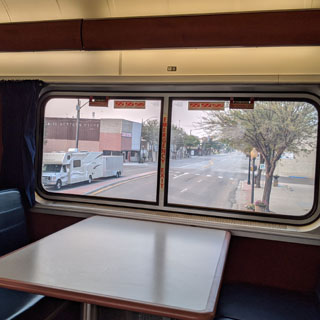
I like eastern Colorado, but this might not be the majority view.
La Junta, Colorado. This is one of a handful of stops where you can step out for a few minutes. Don't wander; the train will not wait for you.
There's a crew-change at La Junta, including locomotive crew and conductors.
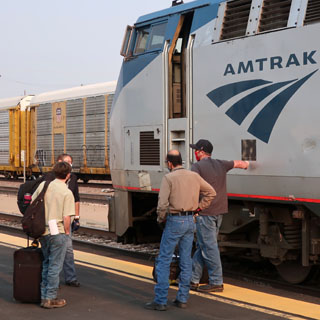
Trinidad, Colorado and Fishers Peak (recently purchased by the Nature Conservancy and the Trust for Public Land and soon to be a Colorado State Park).
Running southbound parallel with I-25. We're headed towards Raton Pass.
We pass through the tunnel in Colorado and emerge at the state line.
 New Mexico
New Mexico

Raton was once a major railroading town, and part of the rail yard remains. But, virtually all freight traffic takes a different (less steep) route, leaving just the two Amtrak trains each day (one west and one east) to keep the rust off the tracks.
Raton is another fresh-air break (or smoking break, depending on how you want to use it).
Wagon Mound was one of the distinctive landmarks of the Santa Fe Trail. If you squint you can see how it got that name.
Following the Mora River to Waltrous. This is a pretty valley; I always look forward to this part of the trip.

Lunch arrives in a sturdy white paper bag. I gave my order a couple of hours earlier. When it's ready, the attendant taps on my door and hands me my food. Overall, I found the food acceptable, but not something to really look forward to. The choice of desert is probably going to be more limited than what's on the menu, and not all the main courses will be available--it all depends on how many people were ahead of you when the attendant takes your order.

Chaperito (little hat). Incidentally, many names for things in this part of the country are a bit French and a bit Spanish (as is this).
Looking at the opposite side of the 180-degree loop (which this train will soon be on) east of the Pecos River crossing. My room was on the south side of the train for both trips, which is not ideal, but isn't too big a deal. Both sides have their points.
Entering Glorieta Pass.
Crossing over the Apache Canyon bridge of 1892. This is such a narrow, slot canyon that it's amazing the engineers figured out a way to put a train through here. This bridge crosses from one side of the canyon to the other while keeping above the creek, below.
Rolling down the hill to the Rio Grande Valley that we'll follow all the way to Albuquerque.
Sandia Peak, northeast of Albuquerque.
Albuquerque is a long stop.
Not only is there a crew change, but this is also a refueling point (which is done using a tanker truck).
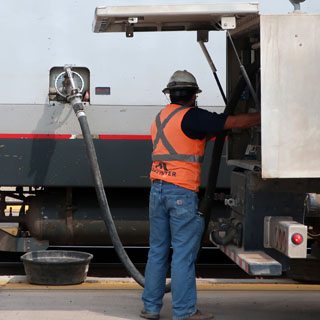
Running south of Albuquerque, the route cuts a corner towards the main TransCon line until it merges at this junction (below). I've never been on this train that it didn't have to stop just short of this point before proceeding onto the much smoother (and therefore faster) track. It's a busy place.
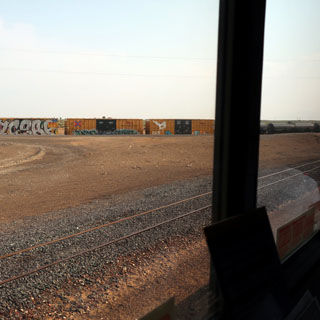
Dinner with I-40 mostly keeping to the south of the tracks.

The Marathon Petroleum refinery near Gallup (opened in 1964 by Shell Oil) is expected to be permanently shut down by October of 2020. I doubt that means all this will go away.
 Arizona
Arizona
Arriving later in the evening at Winslow at La Posada Hotel. The train pretty much lets you off at the front door.
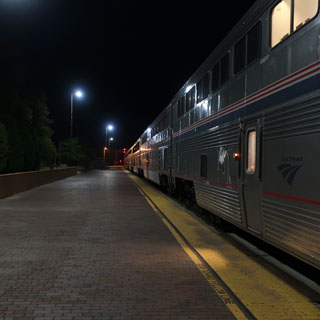
Exactly what's the front and what's the back of this hotel depends on how you got there. This is the view (below) if you arrived by Route-66.
There have been lots of famous (and not so famous) people to stay at this hotel over the years. The walls are covered with photographs of some of them.
So, it was a amusing to find that my room is named for the Doublemint Twins--which I guess has a certain amount of fame attached. In addition to advertising gum, they were popular with USO shows in Viet Nam. Yes; that's an actual accordion from the duo. It was in a glass case; I wouldn't even think of trying it out.
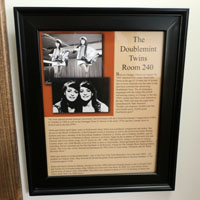

The precautions that have been made against the virus are impressive. For starters, the occupancy is considerably reduced. Additionally, each room is left fallow between stays and there is considerable and obvious attention to sanitation throughout the hotel.
It's a good sized hotel. Let's look around. Note: this is not my first stay at La Posada.
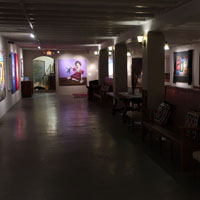
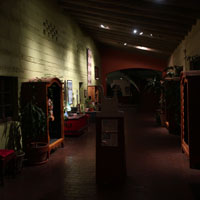


It's late, and I've had dinner on the train, but I'll step into the Turquoise Room for a bowl of soup and a slice of pie.
Breakfast the next morning was quite good. Look out the window; there's the #4 (eastbound) Southwest Chief. It's running two hours late (having been delayed in Barstow).
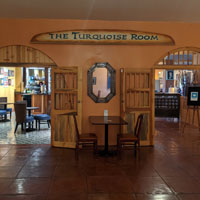
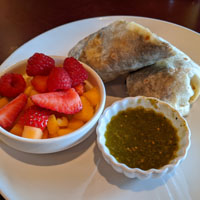
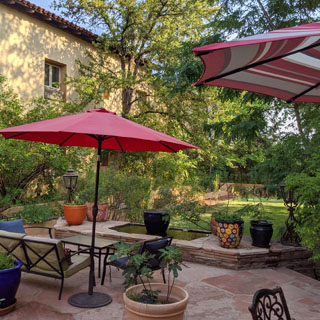
This is Char, she's the groundskeeper/gardener of the hotel and had driven down from Flagstaff to take care of things. The hotel might be running at reduced capacity, but the plants on the expansive grounds don't need less attention on account of that. I get the feeling that no matter where Char might be walking, if she sees a weed, she's going to pull it up by the roots.
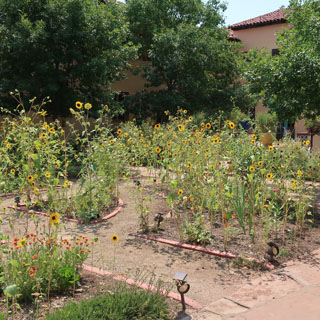
Looking west, down Route-66 through downtown Winslow. It's understandable, but there is virtually no pedestrian activity down here.
Below is the "standing on a corner in Winslow, Arizona" from the Eagles song that is easily the best known song about Winslow. Unfortunately for Winslow, Bobby Troup's "Route 66" song failed to even mention Winslow (nearby smaller Winona having had the necessary three syllables).
One of the activities for hotel guests is to sit and watch the freight traffic go by. This is the Burlington Northern Santa Fe (BNSF) Mainline Transcontinental route connecting Los Angeles with Chicago (Southern TransCon), so you never need to wait long for the next train.

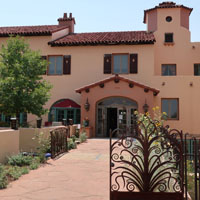
This kitchen garden looks new.

Lunch in the Turquois Room. Having had breakfast, lunch, and dinner (and on more than one trip), it's clear that you can just throw a dart at the menu and you'll be happy with your excellent choice.


That hanging chair is a good place to read a book and watch the trains.
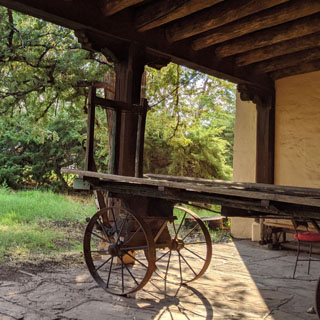
My #4 return train leaves the hotel at 5:30am. Unlike the day before, it was running on schedule this morning (the Amtrak phone app tells you where it is and when it will likely arrive).
 New Mexico
New Mexico
Route-66 runs right through the village of Mesita (Tsé Ch' ééhii), but there's now almost no traffic on that historic road.
This route is all double-tracked and very smooth.
The Alvarado Transportation Center In Albuquerque. This, too, was once a Harvey House hotel and restaurant, but it was all torn down and rebuilt with only a hint of what was lost.
The view out my roomette window as the train passes under the I-40 overpass and continues up the valley. We'll see the change from urban-industrial to rural-mixed-use. Frankly, the first forty miles are not all that attractive.
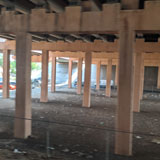
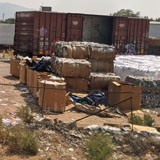
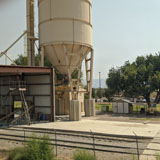

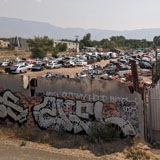
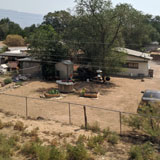

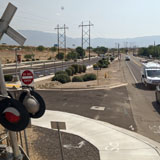
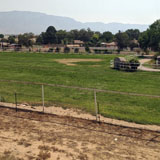
It's lunchtime. The menu is limited compared to what it was pre-Covid, but there are enough items for me to have something different with each meal.

Through Apache Canyon, again, with perhaps a better photograph than I had, earlier.
Near Las Vegas. That's Gallinas Creek. It's an area that I've hiked a few times (being part of the Las Vegas National Wildlife Refuge), but never all the way down to the creek bed.
Again, following the Mora River, north of Waltrous.
Wagon Mound.
You can just see several Pronghorns in the center; they're fast. In fact, they could pace the train, should they want to do something as pointless as that.
Raton, New Mexico.
 Colorado
Colorado
It'll soon be time for dinner and then I'll settle down for the night.
 Kansas
Kansas
Arrival in Newton is early in the morning at a time just as inconvenient as the departure time.
It's probably a frivolous thing (or even foolishly extravagant, depending on your point of view) to take a train 2,006 miles (out and back) just to have lunch, but there you go. That's what I did.




